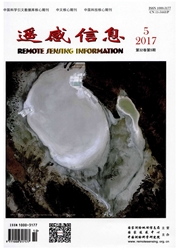

 中文摘要:
中文摘要:
第三代水色传感器MERIS的荧光通道的合理设置为荧光遥感法的应用提供了广阔的发展前景。利用MERIS数据、同步地面光谱和水质监测数据,分别通过基线荧光高度(FLH)、归一化荧光高度(NFH)和最大叶绿素指数(MCI)建立了太湖叶绿素a浓度的荧光遥感估算模型。结果表明:MERIS荧光参数中最大叶绿素指数(MCI)较基线荧光高度(FLH)更适合太湖水体叶绿素a浓度的反演;归一化荧光高度(NFH)与实测叶绿素a浓度间的拟合效果最好。最后选取NFH进行MERIS荧光遥感模型的太湖叶绿素a浓度的反演,其结果客观地反映了太湖水体叶绿素a浓度的空间分布格局。
 英文摘要:
英文摘要:
Remote sensing is a very effective means to monitor water pollution in large areas. MERIS,the 3rd-generation water color sensor, which has several reasonable fluorescence channels and provides a broad prospect for fluorescence remote sensing applications. Based on MERIS data, synchronous ground-based hyperspectral data and water quality monitoring data, the fluorescence remote sensing models were developed between chlorophyll-a concentration and fluorescence line height, normalized fluorescence height and maximum chlorophyll index, respectively. The result showed that the maximum chlorophyll index (MCI) was more suitable for the estimation of chlorophyll-a concentration in the water body of Taihu Lake than the fluorescence line height (FLH) in the inversion analysis for the estimation of chlorophyll-a concentration using MERIS fluorescence parameters, and the normalized fluorescence height (NLHR681/R66s ) had the best fit with the measured chlorophyll-a concentration. Finally, NLH was selected to inverse the spatial distribution of ehlorophyll-a concentration using MERIS fluorescence remote sensing model, and the result objectively reflected the spatial distribution pattern of chlorophyll-a concentration in Taihu Lake.
 同期刊论文项目
同期刊论文项目
 同项目期刊论文
同项目期刊论文
 Detection of acid rain stress effect on plant using hyperspectral data in Three Gorges region, China
Detection of acid rain stress effect on plant using hyperspectral data in Three Gorges region, China Evaluating the spatiotemporal variations of water budgetacross China over 1951–2006 using IBIS model
Evaluating the spatiotemporal variations of water budgetacross China over 1951–2006 using IBIS model 期刊信息
期刊信息
